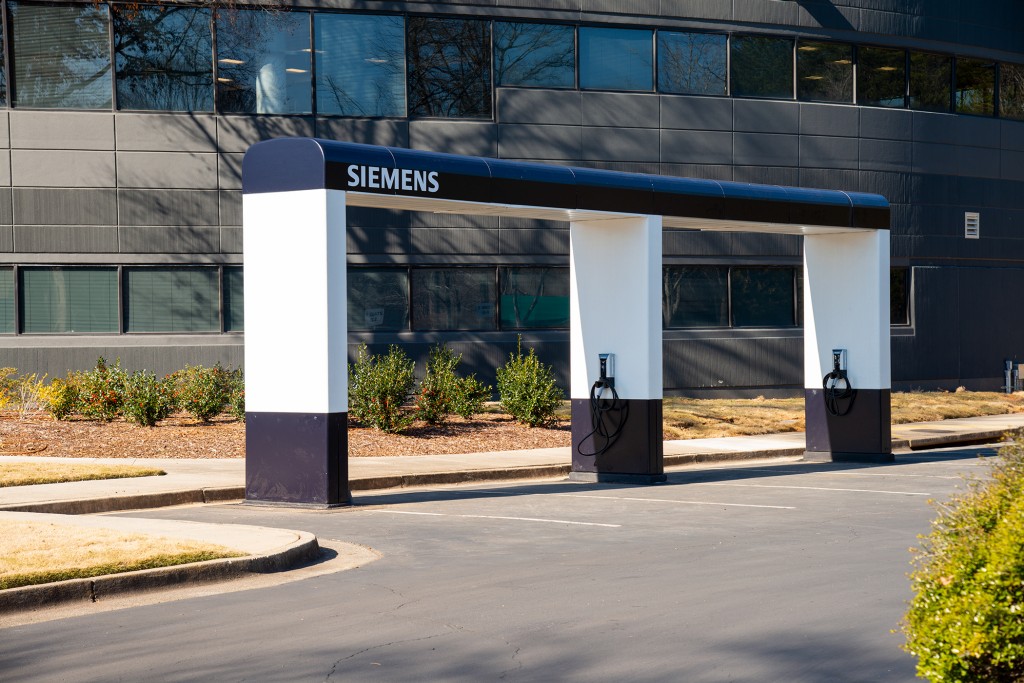Building a new energy infrastructure

The energy transition is a major point of discussion as more governments and municipalities look towards a more sustainable transportation system. The sector accounts for a large share of emissions every year and the majority of methods still rely heavily on fossil fuels – trains, delivery trucks, passenger vehicles, and heavy industry vehicles. These applications all rely on a complex infrastructure network to deliver raw hydrocarbons for refinement and distribution across large areas. Aside from the most remote regions, a gas pump is usually not a far travel. For the energy transition to begin in earnest for the transportation sector, availability of the new power source needs to expand and fast. While there are systems operating on compressed air in factory environments and hydrogen in limited geographies, battery electric seems to be the path forward for passenger vehicles at least. Building that infrastructure is far more complex than the current energy networks with petroleum, requiring smarter systems to “fill” your vehicle. And the workflows of model-based systems engineering (MBSE) will likely be very important in building this infrastructure quickly and safely.
Possibly the first challenge to solving the challenge is location for the electric vehicle (EV) chargers. While the charging systems have gotten much faster and more efficient over time, they are still much slower compared to pumping liquid fuel into tanks. This means the network will either have to be more distributed over an area to serve as many people as possible at a given time or create large complexes devoted to charging and an activity for drivers while waiting. Preferably both, as it would create incentives for the secondary businesses just as convenience stores’ relationship to gas stations. This problem is more a logistics and business case but understanding the requirements and incentives early in the process will help guide final decisions for investing in this new infrastructure. But there are technology companies looking to solve this challenge with automated charging robots in parking garages. Rather than installing hundreds of charging stations, a fleet of robots can fill the need as the charge times are much lower than someone’s workday or the average trip to a mall. After a vehicle is charged, it moves to the next instead of keeping a charging device idle.
In the more here-and-now, the larger Siemens organization is partnering with construction companies to deliver charging systems to businesses without large impacts to existing infrastructure. Deploying these successfully requires understanding the existing electrical infrastructure before augmenting it for the charging network – what is the load capacity? Where are major electrical connection points? But there is also a need to understand the vehicles present while charging to balance the power output across all of the vehicles present. Sophisticated systems for load balancing are possible based on the current capacity of the location as well as the vehicles’ battery capacities, which rely on electronic controllers and software to negotiate power draw. This means that instead of a site requiring a power threshold great enough to charge all vehicles simultaneously at full power, it could transfer power between vehicles most in need. Options like these for expanding the electrical charging infrastructure are following the path of least resistance, pun intended, since workplaces will often already have high power allocation on the grids for other electrical applications.
But charging at the workplace is not the only solution that will be needed for the transportation energy transition. Many do not work in office buildings or stationary locations, and those that do may not be returning in high volumes given the switch to remote work for the knowledge industries. This is where federal investment will be highly important in the United States. Chargers will have to be scattered everywhere to handle the highly randomized routes of the population along with charging capability for service vehicles across many different business types. Again, Siemens is helping with the transition through partnership with the Federal Government and transportation agencies to deliver charging capacity. But adding charge points to the electrical grid is only one step for the energy transition because the grid will have to introduce the capacity for these vehicles switching from the fuel infrastructure to electrical power. Some very smart people are working on load balancing systems similar to the workplace charging centers, but on a regional scale to accommodate swings in energy usage from other applications. There are even concepts for deploying EVs as a electrical grid balancing system, where the batteries store electricity generated during the day from solar or during windy days.
The major concepts of understanding system requirements will likely be the most important aspect of the MBSE methodology for the transition to EVs for transportation, but as the systems become more complex the need will likely grow. Electronic control systems will need continuous data on system health and some prediction capabilities to handle the intermittency of sustainable energy applications. There are also the software systems that need to balance the loads on the electrical infrastructure against the battery capacity of vehicles without leaving someone’s car uncharged at the cost of another’s. I am excited to see how the energy transition unfolds for transportation and am happy to see the steps being taken already to propel this change.
Siemens Digital Industries Software is driving transformation to enable a digital enterprise where engineering, manufacturing and electronics design meet tomorrow. Xcelerator, the comprehensive and integrated portfolio of software and services from Siemens Digital Industries Software, helps companies of all sizes create and leverage a comprehensive digital twin that provides organizations with new insights, opportunities and levels of automation to drive innovation.
For more information on Siemens Digital Industries Software products and services, visit siemens.com/software or follow us on LinkedIn, Twitter, Facebook and Instagram.
Siemens Digital Industries Software – Where today meets tomorrow


